A family home is sold from a mother to a son. Does it need a home inspection?
If you said “No”, look at the picture below, and decide if you can see the major problem that’s been silently destroying this house for years.
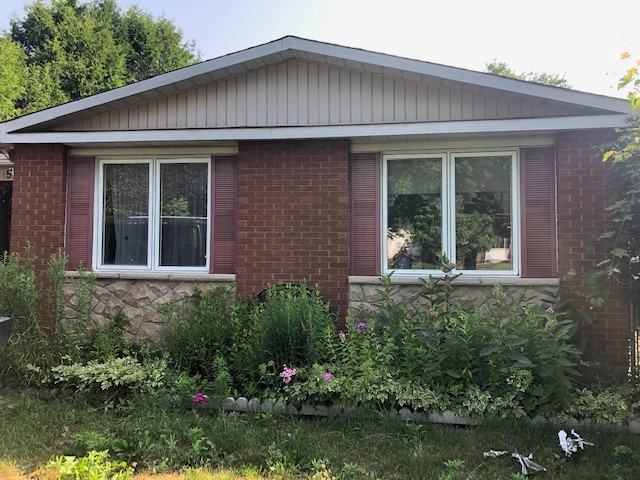
If you can’t see anything wrong, that’s because the damage is hidden behind the nice looking stone masonry under the windows. As a matter of fact, unless you went and looked closely at the window and the stone sill underneath it, you might not even realize the major issue that’s been destroying this house.
Lets take a closer look. Below is a picture of where the stone sill meets the window flashing.
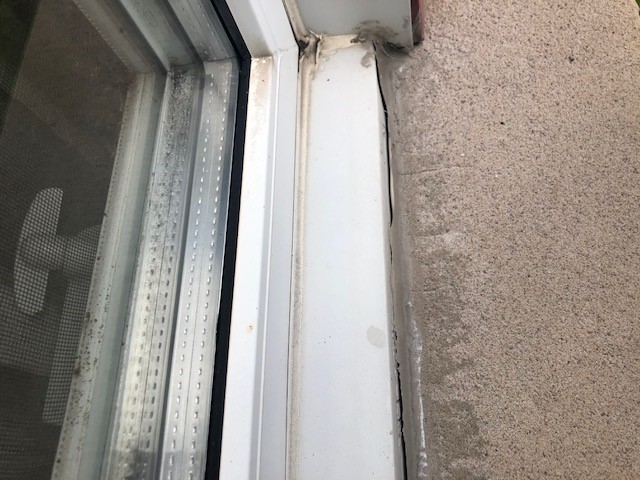
So now we can see the window caulking has pulled away a bit from the flashing, which is a common occurrence on homes, caulking does need to be redone from time to time. But old caulking isn’t the real problem here. Take a look and see if you spot the major issue that has been destroying this house.
If you still cant see it, that’s okay. The mother never noticed it when she bought the house without an inspection, and the son never noticed it when he bought it, also without inspection, from the mother. As a matter of fact it took a lot of time, detective work, particularly heavy rains and the basement being converted into a rental unit before the problem was noticed.
The Start of The Problems
Once the basement had been converted to a rental unit, there was a someone living in and using the basement for the first time in the recent history of the house. A small puddle was discovered along the rear wall of the house, damaging a few items. It was located under the tankless hot water heaters drain line, leading to the assumption the heater was causing the drip. Turning down the temperature of the heater and placing a bucket under the drain line didn’t fix the issue though, as one day it was noticed that it was slightly damp in the same area, but the bucket was empty. The area was searched, but no source of the water was determined. On and off for over a year small puddles would be found in the same area, but the source of the water could never be found.
The Puddles Solved, But The Problems Just Starting
Fast forward to the heavy rains we had a little while ago. Blowing winds blew rain hard and steady against the front of the house. The tenant noticed the puddle start at the back of the house, and was able to get it inspected right away. The water was noticed to be running down the concrete wall from the top, and the top sill of the foundation was wet. It was then noticed when checking an access panel at the front of the house that there was a puddle also. Removing the drop ceiling, it was able to be verified that water was running around the edge of the house via the foundation top, and overflowing at the back of the house, running down a wall onto the floor. The extremally heavy rain caused it to overflow in several other areas during the duration of the storm, and the unit had to be dried out and dehumidified.
The Hidden Major Defect is Fully Revealed
But where was the water coming in from? A house is well designed to stop water penetration, and with no obvious damage to the exterior of this home, seals and caulking was the next thing to check. That’s when the caulking gap at the window was noticed. But that’s where it became a big problem. The gap actually went straight down, allowing rain that landed on the windows to flow down and into the gap, down between the wall and the masonry. And now we start looking at the masonry. It has a loose cap stone and tiny cracks throughout the entire mortar joints. It was clearly added on after the original builder, and upon looking at the house across the street (the same model, the right picture) it becomes clear what was modified on this house.
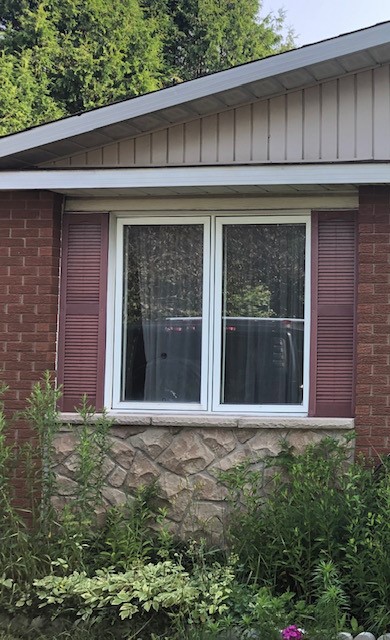
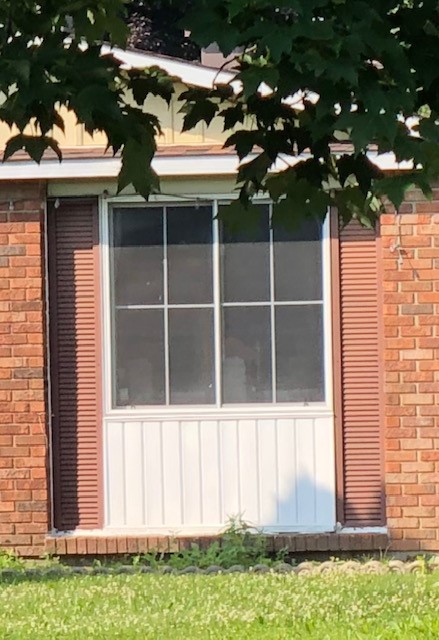
So a couple things also don’t look right upon close inspection, and the red shutter was removed, and the loose cap stone lifted off for a better look. And behind that was found the original shutter and trim, still attached to the house with the masonry placed over top of it and unsecured. You can see from the pictures below how there was no seal against water behind the shutter, and how impossible it would be to get a water tight seal, even with an enormous amount of newly applied caulking. The water was running down into behind the masonry in so many different ways, it was clearly done by someone who had no intention doing it right. And to make it all the much worse, the masonry also didn’t have holes at the bottom for all that water to drain out of, so it was forced into the house and along the foundation top.
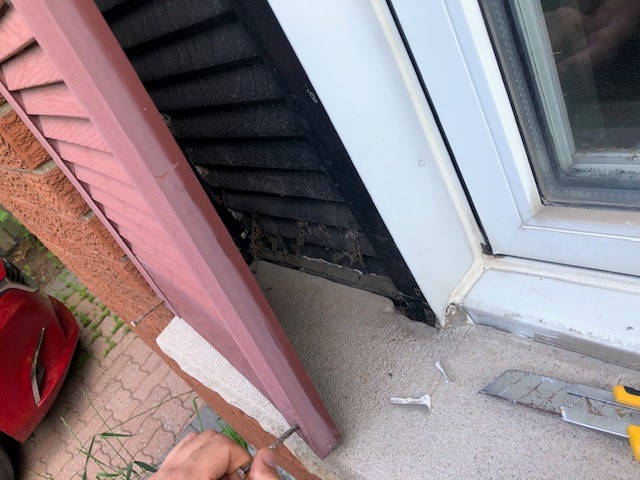
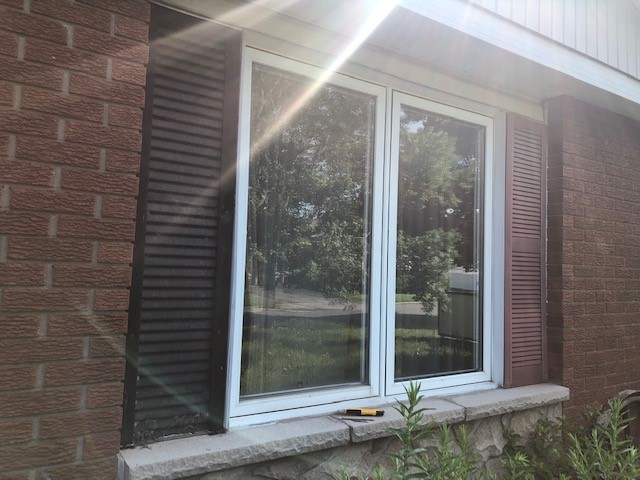
In this close-up picture with the sill removed, you can see how the brick was just placed against the old window flashing, not under it, with water running directly down.
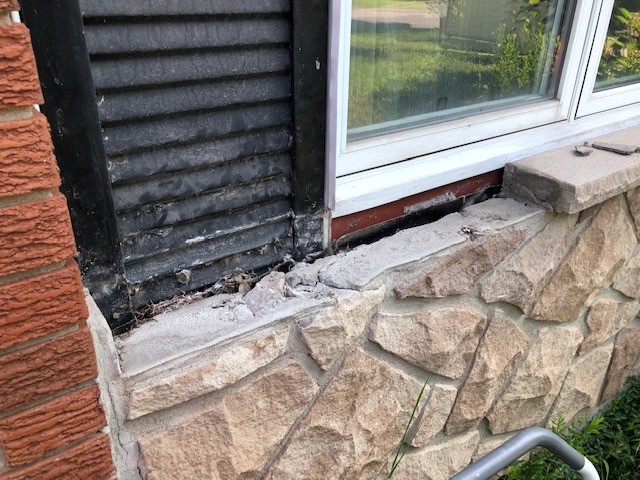
Final Thoughts
Do you think you would have noticed that major defect if you were looking at buying this house?
A house is a complex thing, with many systems and components doing things without it being obvious. A inspection will catch things that a regular person would miss. Even this house, sold with the best intentions from one family member to another, had an existing issue from a previous owner slowly working away at this house and ruining it. A home inspection here would have identified the problem at the very least, allowing it to be addressed without taking a year of wondering and cleaning, stress from dealing with tenant concerns, and further damage to the house.
Having a qualified professional inspect a house before purchase is an important step, and not one to be skipped. Home inspections are not expensive, and give way more value to a house than cost. Having the right people available so you can get that new home inspected in time for you to submit an offer is one of the many services I’m able to offer by working with many professional tradespeople.
If you need a referral for an inspector, or have other questions about real estate, reach out to me at my contacts below
|
|
|

 Facebook
Facebook
 X
X
 Pinterest
Pinterest
 Copy Link
Copy Link

 Click to schedule a meeting
Click to schedule a meeting
